Transcription
Reply: waar 9*27*19
In fiscal year 2017-18, volunteer programs had a budget of over $11 million. (see pages 40-41 of this report). With no accountability of success statistics to warrant these tax dollars.
If I was a California tax payer, I'd scrutinize this report and consider the lesson learned from the Boston Tea Party of 1773.
But that's just me.
CALIFORNIA STATE AUDITOR
621 Capitol Mall, Suite 1200 | Sacramento | CA | 95814
916.445.0255 | TTY 916.445.0033
For complaints of state employee misconduct, contact us through the Whistleblower Hotlin:
1.800.952.5665
Don't want to miss any of our reports? Subscribe to our email list at auditor.ca.gov
For questions regarding the contents of this report, please contact Margarita Fernandez, Chief of Public Affairs, at 916.445.0255
This report is also available online at www.auditor.ca.gov | Alternative format reports available upon request | Permission is granted to reproduce reports
California Department of Corrections and Rehabilitation
Several Poor Administrative Practices Have Hindered Reduction in Recidivism and Denied Inmates Access to In-Prison Rehabilitation Programs
January 2019
January 31, 2019
2018-113
The Governor of California
President pro Tempore of the Senate
Speaker of the Assembly
State Capitol
Sacramento, California 95814
Dear Governor and Legislative Leaders:
As requested by the Joint Legislative Audit Committee, the California State Auditor presents this audit report concerning the effectiveness of in-prison rehabilitation programs at the California Department of Corrections and Rehabilitation (Corrections).
This report concludes that inmates who completed in-prison cognitive behavioral therapy (CBT) programs recidivated at about the same rates as inmates who did not complete the programs. These results are serious enough to highlight an urgent need for Corrections to take a more active and meaningful role in ensuring that these programs are effective. In particular, Corrections has not revalidated the accuracy of the tools it uses to assess inmates' rehabilitative needs since recent statutory changes caused a major shift in the State's prison population. Inaccurate assessment tools could result in placing inmates in the wrong programs or in no programs at all. Furthermore, Corrections has not ensured that all of its CBT class curricula are evidence based, resulting in a significant portion of inmates that do not receive treatment that has been proven effective in reducing recidivism. Addressing these two problems would help Corrections ensure that rehabilitation programs are meeting their primary purpose of reducing recidivism.
Moreover, Corrections has neither consistently placed inmates on waiting lists for needed rehabilitation programs nor prioritized those with the highest need correctly. This contributed to Corrections' failure to meet any of the rehabilitative needs for 62 percent of the inmates released in fiscal year 2017-18 who had been assessed as at risk to recidivate. One reason inmates may not be receiving needed rehabilitation programs is that Corrections is having difficult fully staffing its rehabilitation programs at all of its prisons. These various issues have resulted in low inmate enrollment rates when compared to the programs' budgeted capacity at the three prisons we reviewed.
Finally, Corrections has neither developed any performance measures for its rehabilitation programs, such as a target reduction in recidivism, nor assessed program cost-effectiveness. Moreover, Corrections has not analyzed whether its rehabilitation programs reduce recidivism. To perform such an analysis, Corrections needs to collect additional data and take steps to ensure it delivers CBT programs as intended across all of its facilities. Although Corrections plans to coordinate with external researchers to conduct a performance evaluation of the rehabilitation programs over the course of the next two years, Corrections has taken no formal steps to initiate this process. Because the Legislature provided Corrections with a significant budget increase so that it could expand rehabilitation programs to all prisons in the State, it is vital that Corrections demonstrate that the additional investment was worthwhile. To this end, the LEgislature should implement new accountability mechanisms related to Corrections' rehabilitation programs, including additional oversight, performance targets, and recidivism evaluations conducted by an external researcher.
Respectfully submitted,
ELAIN M. HOWLE, CPA
California State Auditor
Selected Abbreviations Used in This Report
board Board of State and Community Corrections
Corrections California department of Corrections and Rehabilitation
DOJ California Department of Justice
CalPIA California Prison Industry Authority
C-ROB California Rehabilitation Oversight Board
EDD Employment Development Department
Folsom Folsom State Prison
Inspector General Office of the Inspector General
PPIC Public Policy Institute of California
R.J. Donovan Richard J. Donovan Correctional Facility
San Quentin San Quentin State Prison
UC Irvine University of California, Irvine
Contents
Summary 1
Introduction 5
Corrections' Implementation of Certain Rehabilitation Programs
Has Not Resulted in Demonstrable Reduction in Recidivism 13
Corrections is Failing to Place Inamets Into Appropriate
Rehabilitation Programs, Leading to Inmates Being Released
From Prison Without Having Any of Their Rehabilitation Needs Met 23
Additional Oversight Is Needed to Ensure the Effectiveness of
Corrections' Rehabilitation Programs 35
Appendix A
Technical Appendix: Data and Methodology 49
Appendix B
Scope and Methodology 53
Appendix C
The Number of Inmates on Waiting Lists and the Average
Time Spent on the List 57
Responses to the Audit
California Prison Industry Authority 59
California Department of Corrections and rehabilitation 61
California state Auditor's Comments on the Response From
the California Department of Corrections and Rehabilitation 63
California Rehabilitation Oversight Board 65
Blank page inserted for reproduction purposes only.
SUMMARY
Although the number of inmates housed in state prisons has decreased in recent years, recidivism rates for inmates in California have remained stubbornly high, averaging around 50 percent over the past decade. The State defines recidivism as when a person is convicted of a subsequent crime within three years of being released from custody. Research shows that rehabilitation programs can reduce recidivism by changing inmates; behavior based on their individual needs and risks. For example, inmates are more likely to recidivate if they have drug abuse problems, have trouble keeping steady employment, or are illiterate. Rehabilitation programs aim to address and mitigate those challenges. In 2012 the California Department of Corrections and Rehabilitation (Corrections) released a report, commonly known as the blueprint, that set a number of goals, including increasing access to rehabilitation programs. Since 2012 Corrections has expanded cognitive behavioral therapy (CBT), vocational education, and academic education to all of its 36 prisons, including a corresponding increase in its budget for in-prison rehabilitation programs, from $234 million in fiscal year 2013-14 to $298 million in fiscal year 2018-19. Corrections has also begun administering the tools it uses to assess rehabilitative needs for a greater number of inmates, and has created ways to better ensure its CBT vendors are providing services consistently and efficiently. However, since this expansion, Corrections has not undertaken sufficient effort to determine whether these programs are effective at reducing recidivism.
Corrections' Implementation of Certain Rehabilitation Programs Has Not Resulted in Demonstrable Reductions in Recidivism
Our analysis of inmates released from prison in fiscal year 2015-16 did not find an overall relationship between inmates completing CBT rehabilitation programs and their recidivism rates. In fact, inmates who completed their recommended CBT rehabilitation programs recidivated at about the same rate as inmates who were not assigned to those rehabilitation programs. One potential reason why our overall analysis did not find that CBT rehabilitation programs are related to reductions in recidivism is that Corrections has not revalidated the accuracy of the tools it uses to assess inmates' rehabilitative needs since recent statutory changes caused a major shift in the State's prison population Another potential reason is that Corrections has not ensured that vendors provide consistent and effective CBT programs that have been proven through research to reduce recidivism - otherwise known as evidence based. Specifically, we reviewed contracts for vendors that provided CBT classes at 10 of Corrections' 36 prisons and found that nearly 20 percent of their respective curricula were not evidence based.
Other posts by this author
|
2023 may 31

|
2023 apr 5

|
2023 mar 19

|
2023 mar 5

|
2023 mar 5

|
2023 mar 5

|
More... |

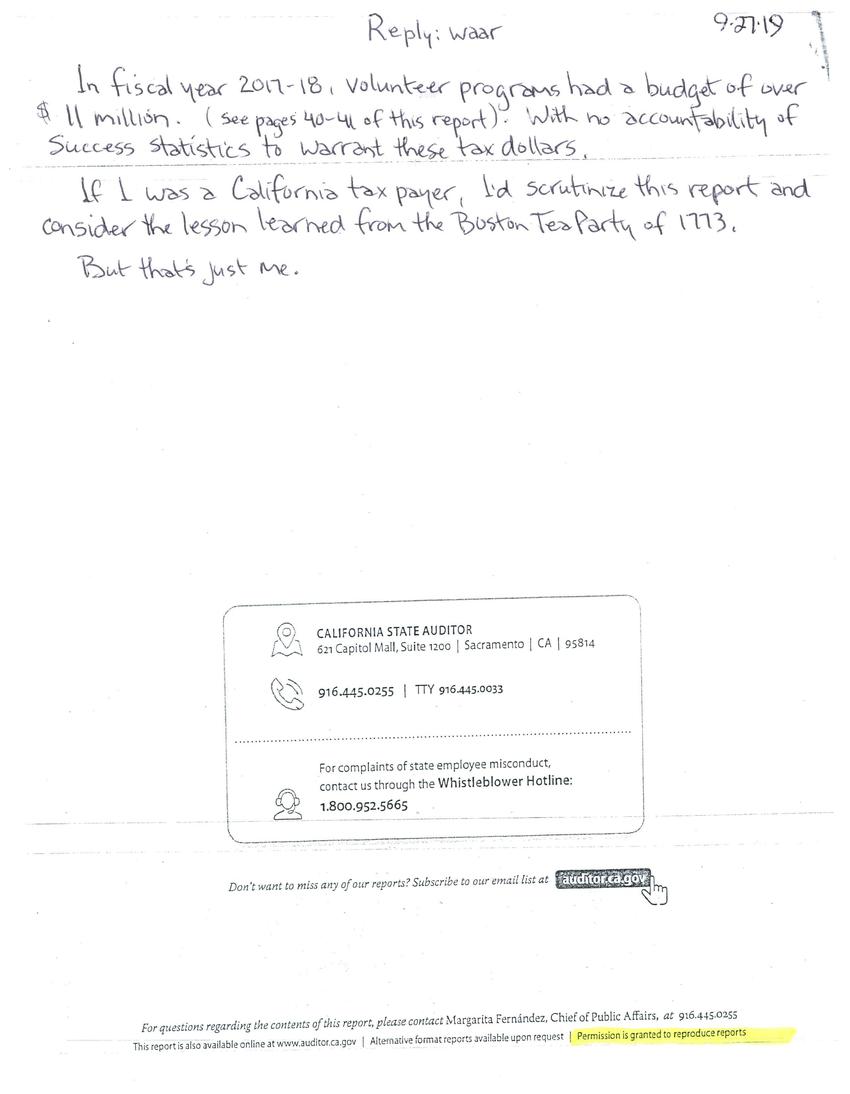
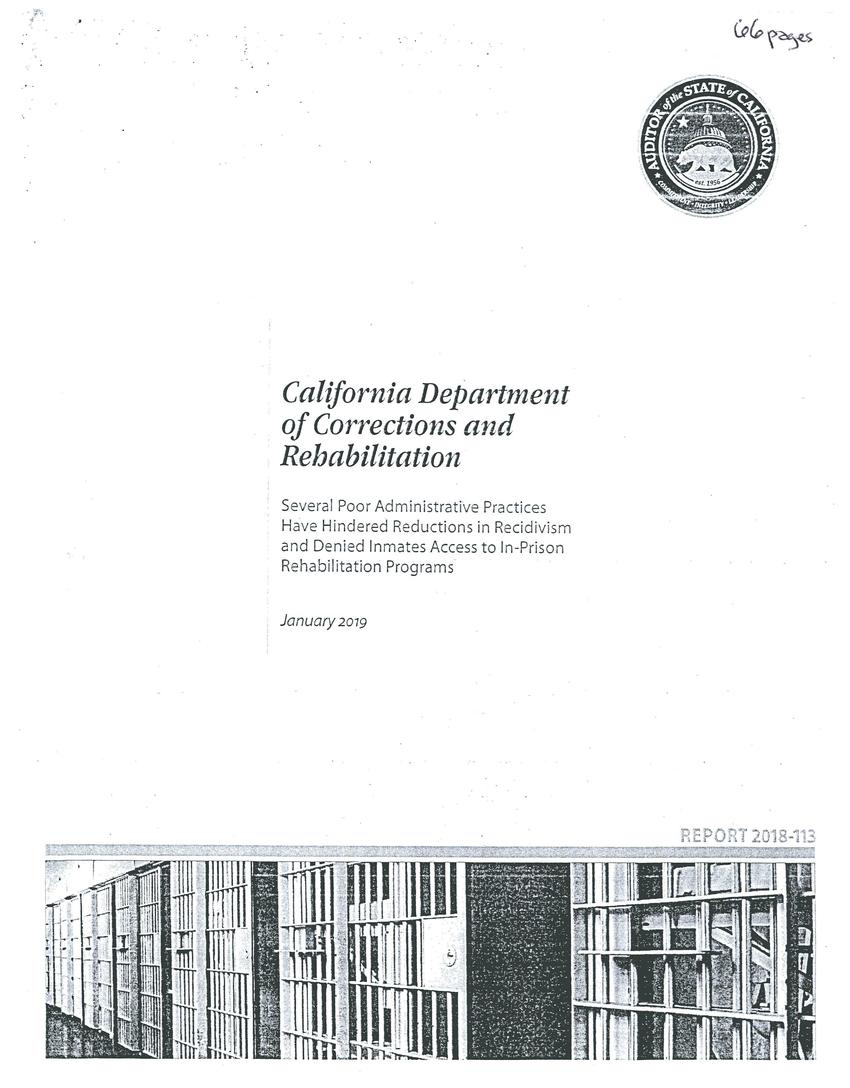
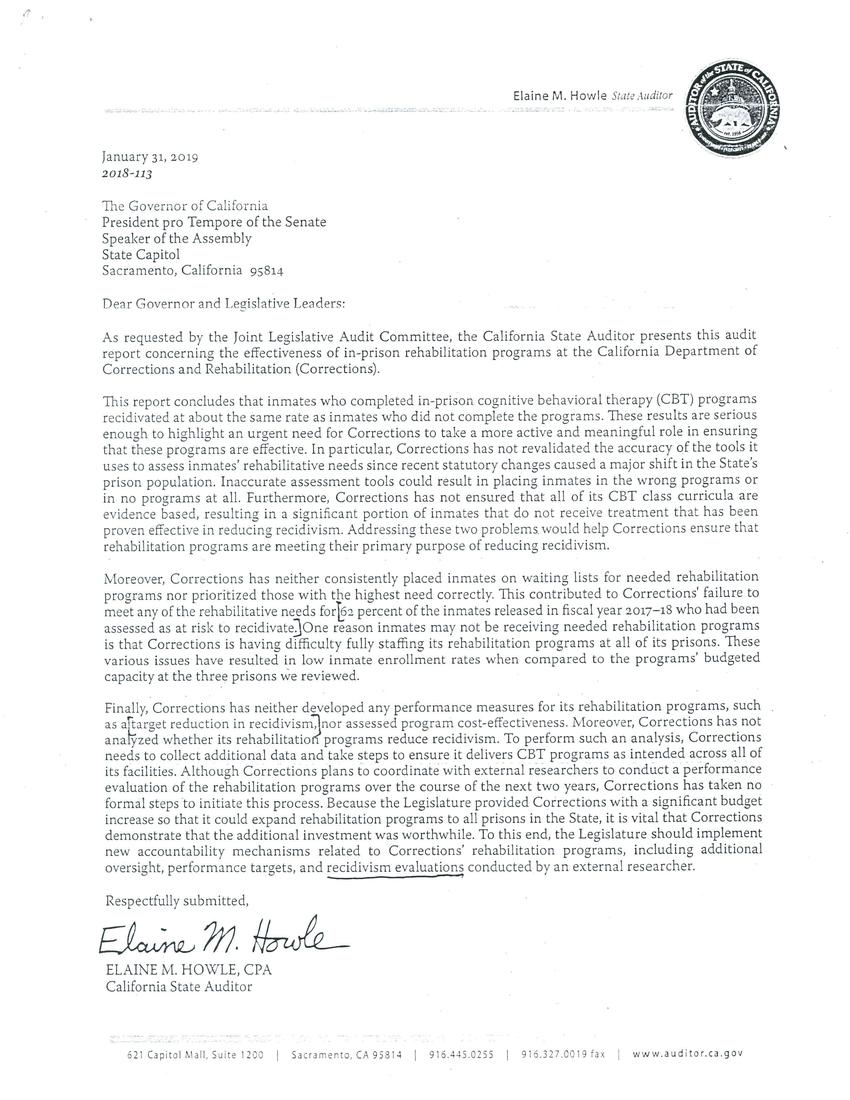

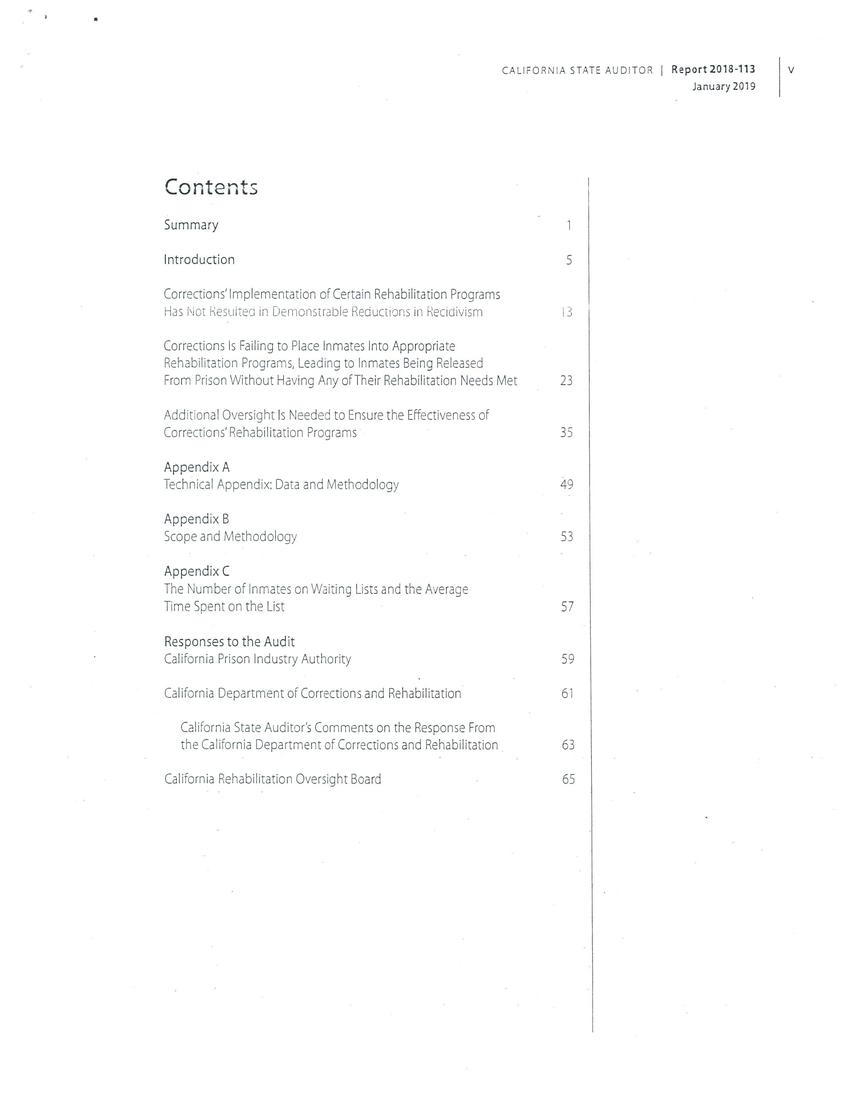

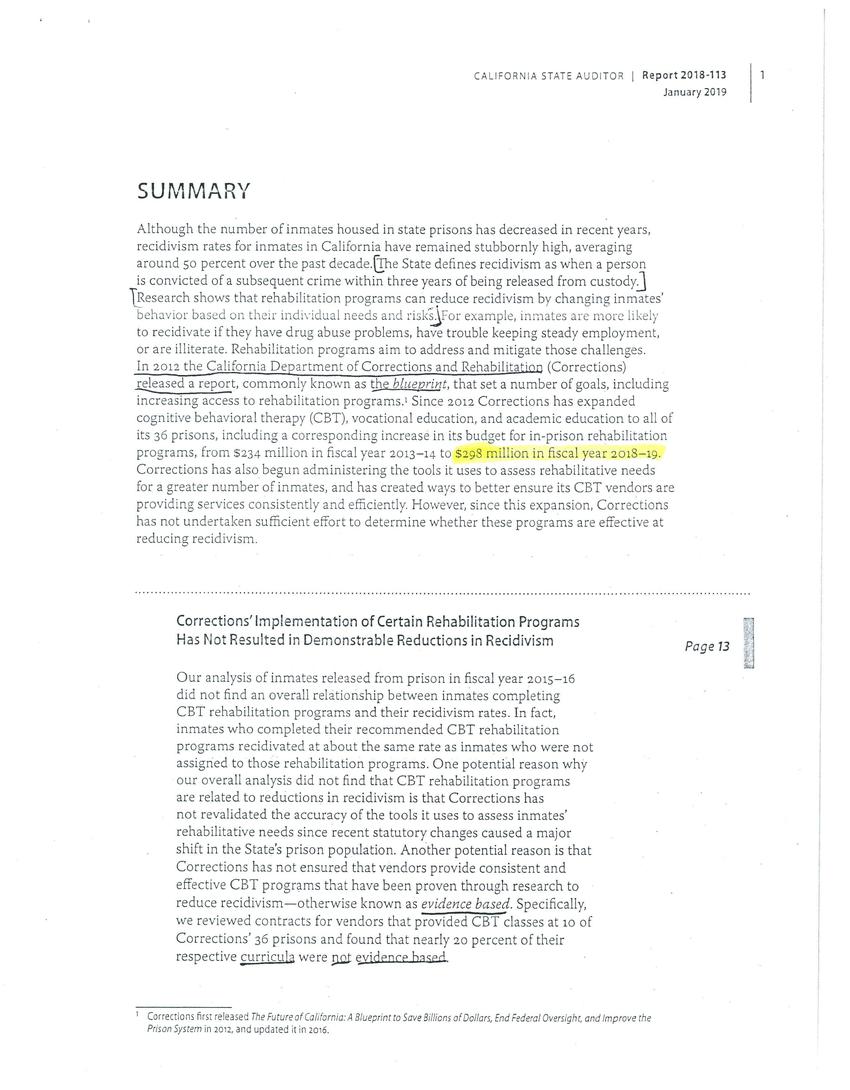
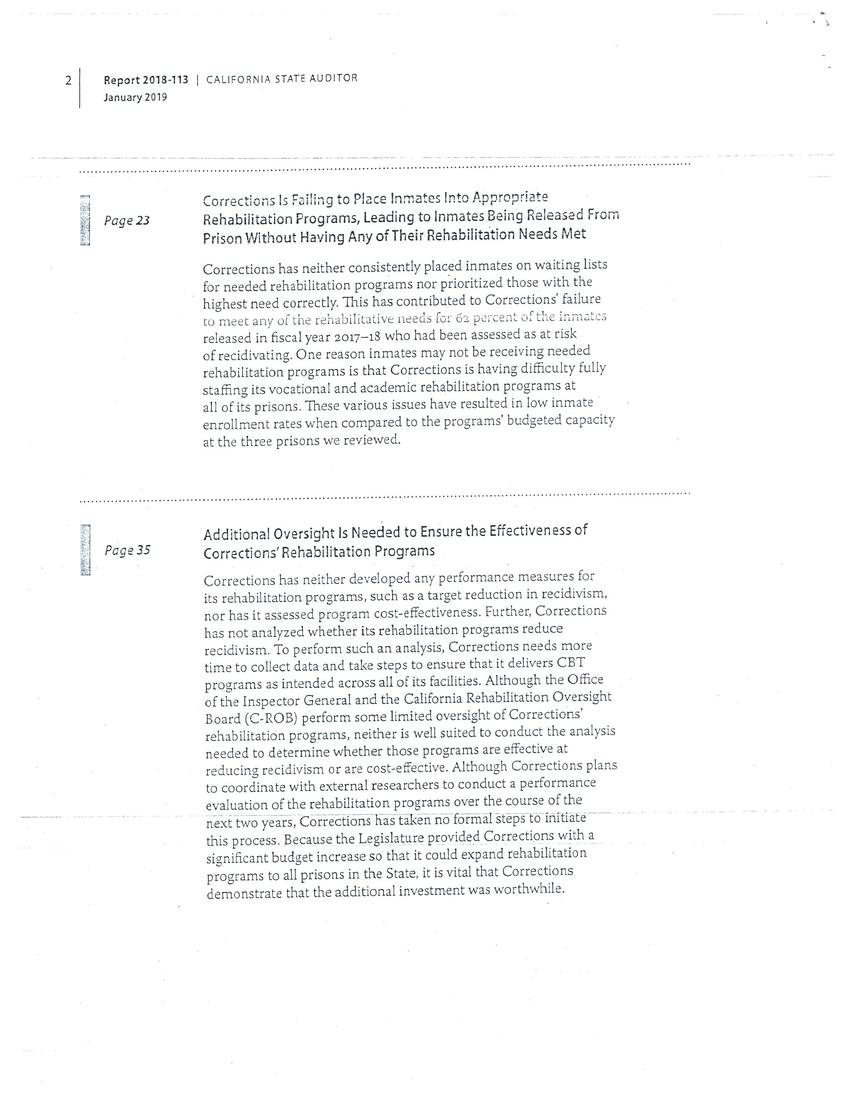
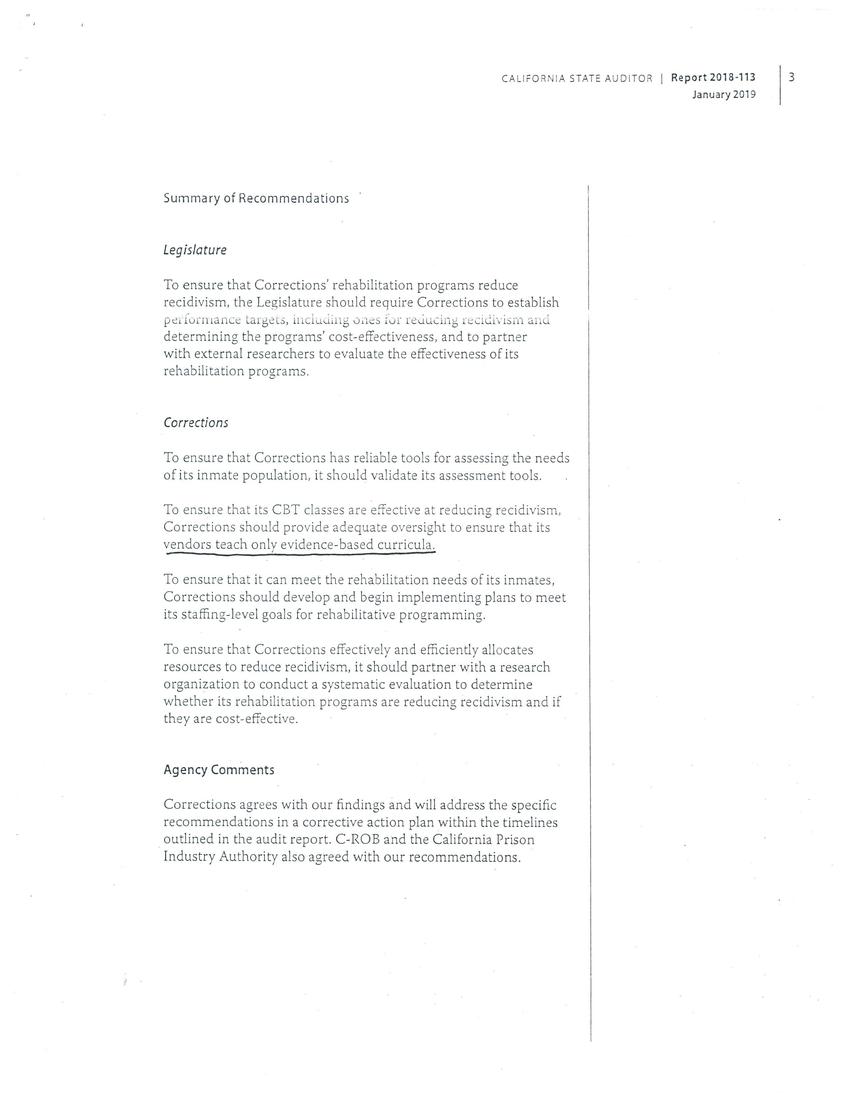

Replies